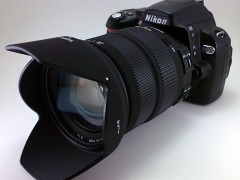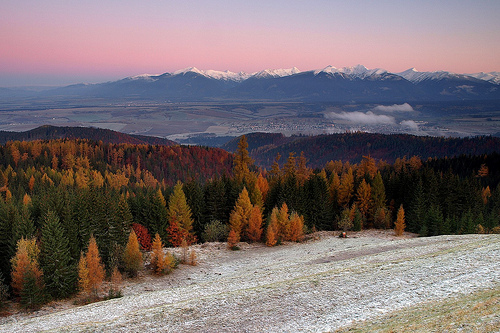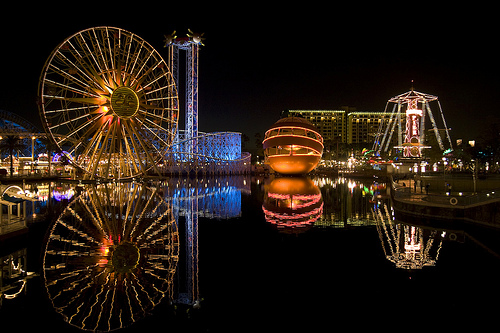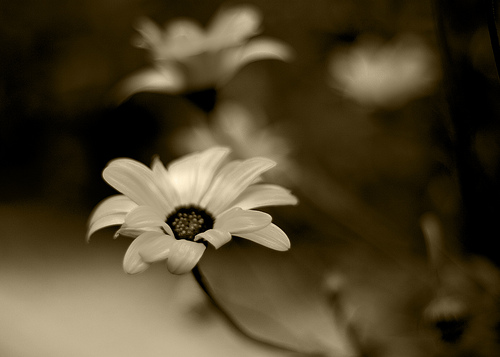
Cameras come with various shooting modes which have application in specific conditions. Lets have a look at the common shooting modes on a digital camera and what they mean. The point here is to allow you to study the settings the camera chooses in a particular situation and give you some experience when the need arises for you to choose these settings manually for a particular situation. While consumer cameras have fancy things like face detection, pros generally have the following with only a variation in the names.
The Auto Mode
As the name suggests, all the settings are chosen automatically by the camera in this mode. Based on the subject and the amount of light available, camera sets the aperture, shutter speed and the ISO. Most of the cameras are intelligent too to even fire the flash in low light scene.
The Portrait Mode
Turn on the portrait mode when photographing friends and family. The camera in the portrait mode keeps the main subject in clear focus and puts the background out of focus to compliment the subject with soft dreamy effect.
The Landscape Mode
What do you need when shooting the landscapes? Vivid colors and a high depth of field. Well, the camera is smart enough to make these settings for you when you are in the landscape mode. The flash is turned off and a small aperture is set for photographing a high depth of field to thus keep the maximum part of the scene in focus.

The Macro Mode
The Macro mode is represented as a flower on the dial. This mode makes the necessary settings for taking the close-up shots of small objects, flowers and insects. It opens up a wider aperture and allows you to zoom into the subject to fill the frame with minute details. Lens can be moved closer to the subject than in other modes. To avoid the camera shake hold the camera steady or use a tripod.
The Sports Mode
Especially meant for dynamic motion shots, the camera in this mode sets a high shutter speed to freeze action. While the high shutter speed can compensate for a moving subject, it really doesn’t matter much if the photographer is on the run because the motion of the camera is way higher in the perspective than the object in focus. The camera in this mode can give you sharp results even if you hand the camera to your kids. Most of the cameras also use continuous focus in this mode so as to keep the moving subject in sharp focus.
Night Scene Mode
Night scene mode is apt for shooting in low light. It sets the camera to take long shots in low light by slowing down the shutter speed. Use of tripod is highly recommended when you turn on this mode. This mode is better than auto mode most of the times because auto mode doesn’t expose long enough which is very much required to compensate for low. Check out tips for taking awesome night shots here.

Programmed Auto (P) Mode
Program auto mode is referred to as a semi-auto mode. While the camera sets the exposure all by itself, the user gets the freedom of making other settings like exposure compensation (learn about exposure compensation here), flash, etc.
Shutter Priority (S) Mode
It is one of the semi-auto modes provided by the camera. In this mode you choose the shutter speed and the camera sets the aperture automatically. This is different from the “Programmed Auto” since the aperture value for a particular shutter speed is fixed and these values are paired. More on this in a dedicated post on shutter speed. This mode is best used when you want to freeze the motion or induce a trail in the movement.
Aperture Priority (A) Mode
While the shutter priority mode allows you to play around with various shutter speeds, Aperture priority mode gives you a chance to control the aperture or the lens opening. Here you choose the aperture and the shutter speed is set automatically. This mode is used by professional photographers to portray the selective focus; i.e., controlling the depth of field. Check out more on aperture priority mode here.

The Manual (M) Mode
Traditionally speaking this is the mode you need to aim to work on. But DSLRs have changed things. Most of the latest gear does everything automatically allowing you to compose and shoot. Why bother with setting the shutter speed & aperture manually when the camera can detect motion and turn on continuous focus and high shutter speed? The aim of the camera is to take off the load than to bother you with buttons and settings. However this mode comes in handy when you want complete control over the settings — for the scenes where things get tricky and the light ditches the camera metering. The manual mode allows you to interfere directly with the settings so that you can even choose a weird combination, break some rules and come out with some fantastic images.
There may be other modes as well on you camera depending on the brand you choose. Use these effectively to be ready when the family calls upon. This will save ones grace instead of exposing their technical-manhandling capabilities.
Do you shoot manual or one of these modes? Which one and why?


This was very helpful piece of information although I just have a digicam but I love to experiment
I love the aperture mode along with macro. They’re simply amazing.